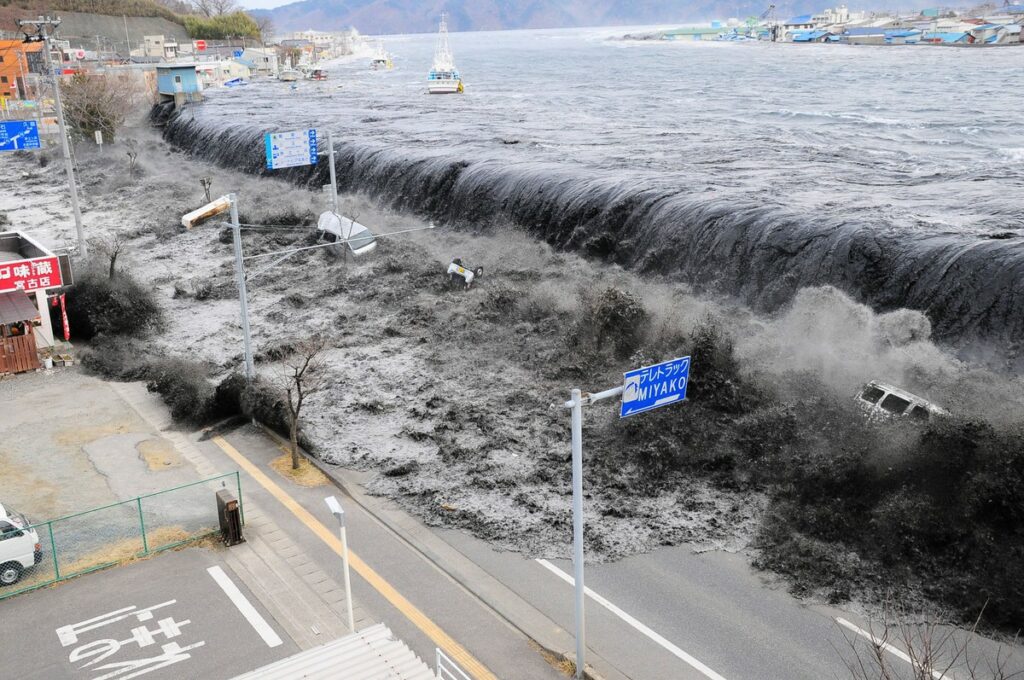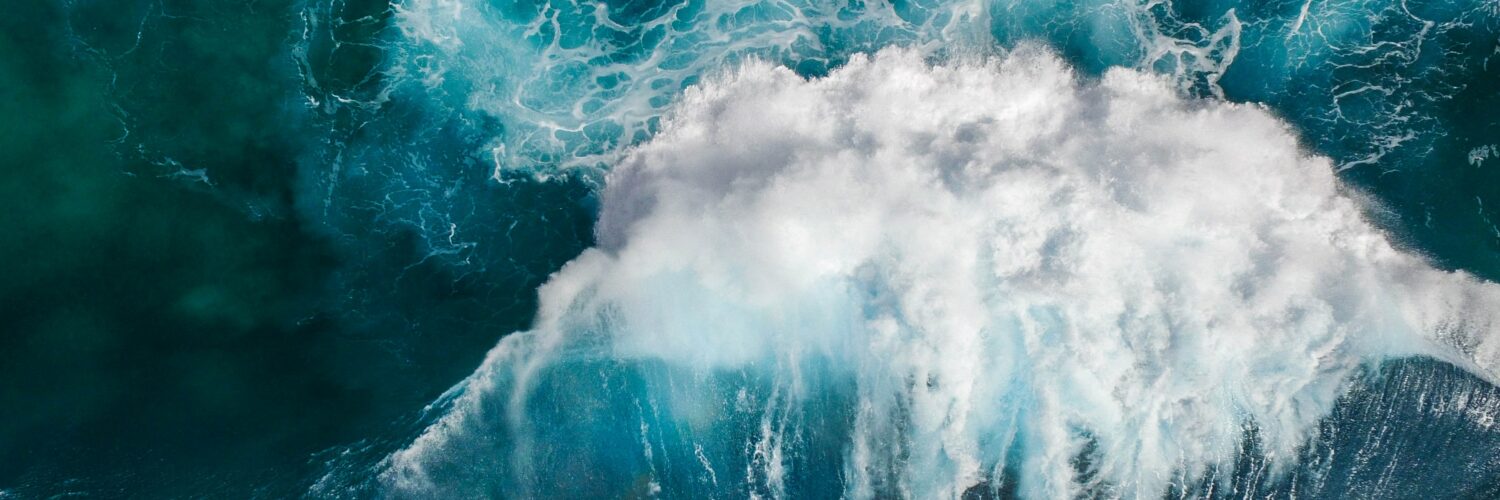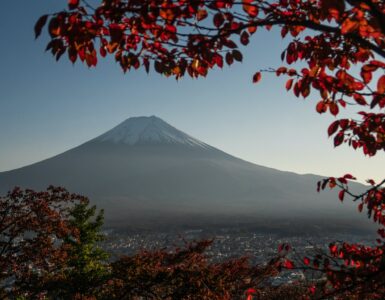Most of us are familiar with tsunamis, especially those of us who live in earthquake-prone coastal areas. As we know, most earthquakes occur along the Ring of Fire – countries along the edges of the Pacific Ocean. Since earthquakes are the most common cause of tsunamis, over 80% of tsunamis occur along the Ring of Fire as well.
Today, we will be discussing what tsunamis are, and some of the causes and impacts involved.
What are Tsunamis?
The term “tsunami”, a loanword from the Japanese word “津波”, means “harbour wave”. In geography, tsunamis are a series of waves formed when a large volume of water in a water body is displaced. Earthquakes, volcanic eruptions, together with other explosions, either underwater or above water, can cause this displacement. Since winds cause normal waves and the gravity of the Moon cause tides, this makes the waves of tsunamis different.
Tsunami waves have a much longer wavelength compared to regular currents or waves. When it first hits the shore, tsunami waves look like a tide that is rising fast. A few waves make up tsunamis, with periods that range from a few minutes to a few hours. The upward drawing of water into each wave causes the sequence of waves to have deep troughs between. Large displacements can generate a tsunami height of tens of metres. While it primarily affects coastal areas, tsunamis can also affect the entire ocean basin.
How Tsunamis work
As we know, tsunamis have long wavelengths. This makes them barely noticeable in deep water, but they can cause waves that have significant heights. The friction at the base of the waves will slow down the tsunami in shallow waters, which causes the wavelength to shorten and build in height.
To elaborate on how water displacement causes tsunamis, we first have to imagine a major tectonic activity underwater. Imagine that there is an underwater earthquake – the seabed moves up or down very quickly, causing water to displace and rush upwards to the surface equally fast. Similarly, if there is an underwater volcanic eruption, shifts in the seabed will cause the displacement of water.
Distribution of Tsunamis
As mentioned earlier, most tsunamis occur in the Pacific Ocean, along the Ring of Fire. This is due to them being a secondary hazard of tectonic activities. They are associated with subduction zones found in the ocean. However, they can occur elsewhere around the world, including the Mediterranean Sea, the Atlantic Ocean, and the Indian Ocean. Major tsunamis that occurred in the Pacific Ocean includes the 2011 Tōhoku earthquake and tsunami and the 1960 Valdivia earthquake and tsunami.
Causes of Tsunamis
Tectonic activity
We have mentioned earlier that underwater earthquakes and volcanic eruptions can cause tsunamis. This is due to the sudden deformation of the seabed, resulting in the displacement of water. While the seabed is often displaced, it is usually not strong enough to cause a major tsunami.
Landslides
Landslides can cause tsunamis – large volumes of water that is rapidly displaced can transfer energy faster than it can absorb. We can see this in the 1958 Lituya Bay earthquake and mega-tsunami. This was also the tsunami with the highest wave recorded in human history – 524 m.
Landslides generally cause water in the shallow parts of the coastline to displace. While they often affect water in enclosed bays and lakes, there has not been a landslide large enough to cause a tsunami that travels across oceans.
Meteorological conditions
Some meteorological conditions can displace water, resulting in tsunamis. This is especially when there are sudden changes in barometric pressure. While they are similar to seismic tsunamis caused by tectonic activities, they often have lower energies. This means that they cannot cross oceans and they cannot form instantly. While they may have lower energies, resonance on shorelines can amplify them. This makes them strong enough to kill and damage objects.
They are different from storm surges since storm surges have a very different dynamic. While both are able to cause coastal flooding, storm surges cannot propagate beyond their sources, unlike tsunamis.
Man-made tsunamis
Humans have attempted to induce tsunami waves as a tectonic weapon. We can see this in the Second World War, where the New Zealand Military Forces attempted to generate tsunami waves. This initiative, known as Project Seal, ultimately failed.
However, New Zealand was not the only one that explored this idea. The United States attempted to use conventional explosives to generate tsunamis near an enemy coastline. However, just like New Zealand, this was proven unfruitful.
Extent of Damage of Tsunamis
Factors affecting the extent of damage
Most tsunamis comprise a sequence of waves that lasts a few hours. They often have heights of between three to ten metres, together with short wavelengths and velocities of about 35 km/h. In the open ocean, they can have wavelengths of up to 250 km, a lower height of up to 3 m, and a velocity of around 800 km/h. A few factors affect the extent of the tsunami.
The run-up of the tsunami depends on several factors, such as the distance travelled by the tsunami, the extent of the lowland, the offshore bathymetry, the orientation of the coastline, and the shape of the coastline. Let us take the 2011 Tōhoku tsunami as an example to explain these factors.

As energy is lost when tsunamis travel long distances, short distances from the epicentre mean that the tsunami is stronger. Since the epicentre of the 2011 Tōhoku earthquake is only 130 km from the shore, it hit the shore hard. At the same time, deeper water allows tsunami waves to retain energy. In Japan, lowlands make up most of the east coast, which the tsunami hit. This combines with the orientation of the coastline, which caused the east coast to face the waves. The shape of the coastline, which featured estuaries, also funnelled the waves of the tsunami.
On the other hand, the intensity of the tsunami is dependent on other factors. This includes the land use, the population density, and the effectiveness of warning systems of the area where the tsunami hit.
Minimising the extent of damage
Similar to earthquakes, it is impossible for us to prevent tsunamis. While we cannot predict the exact location and time that a tsunami would occur, early warning systems allow us to raise the alarm at the very start of the tsunami. This helps us to minimise the damages caused by the tsunami, especially the lives of residents living along the coastline.
To minimise tsunami damage, earthquake-prone areas have implemented measures, such as seawalls. This includes Japan, which has been working on minimising the impact of tsunamis since 1896. Japan has built a large number of tsunami walls as tall as 12 m, together with floodgates as tall as 15.5 m. However, this may not be as effective – we will now discuss this.
Despite a large number of seawalls around Iwate Prefecture, the 2011 Tōhoku tsunami had waves that exceeded the height of these walls. The tsunami damaged over half of these walls, resulting in the Fukushima Daiichi nuclear disaster. Elsewhere, the tsunami wall of Aonae, Hokkaidō, was ineffective in minimising the damage caused. The 1993 Hokkaidō earthquake caused tsunami waves as tall as 30 m – the waves washed right over the wall.
Impacts of Tsunamis
Economic Impacts
Tsunamis are often powerful enough to destroy and disrupt power, gas, and petrol supply. They may also damage water and sewage systems as well. Just like other natural disasters, transport networks and facilities along coastal regions may be impacted. This is especially so if the tsunami results in a long-lasting flood afterwards. A lack of electricity will also cause communication to fail.
Other economic impacts such as disruptions to business and trade may also prevail after a tsunami. Similarly, tourism will dip significantly, depending on the region in which the tsunami hits.
Social Impacts
Aside from deaths and injuries directly involved in the tsunami, victims may also experience hypothermia from being in the water for too long. There may be a spread of diseases, especially water vector-borne diseases. On top of that, damages to healthcare centres may result in the lack of healthcare provided to victims.
Victims may also lose their homes and properties and may have to reside in temporary shelters. This may give rise to social unrest and a less stable government.
Recent Major Tsunamis
| Tsunami | Cause | Death |
| 2011 Tōhoku earthquake and tsunami | Earthquake | 18,550 |
| 2004 Indian Ocean earthquake and tsunami | Earthquake | 227,898 |
| 1883 eruption of Krakatoa | Volcanic eruption | 36,417 |
| 1958 Lituya Bay earthquake and mega-tsunami | Landslide | 5 |
Conclusion
As with most natural disasters, it is impossible for us to prevent tsunamis from occurring. However, with mitigation methods, early warning systems, and emergency preparedness, it is easier for us to prevent the loss of lives and minimise the extent of damage caused by the tsunami.





Add comment